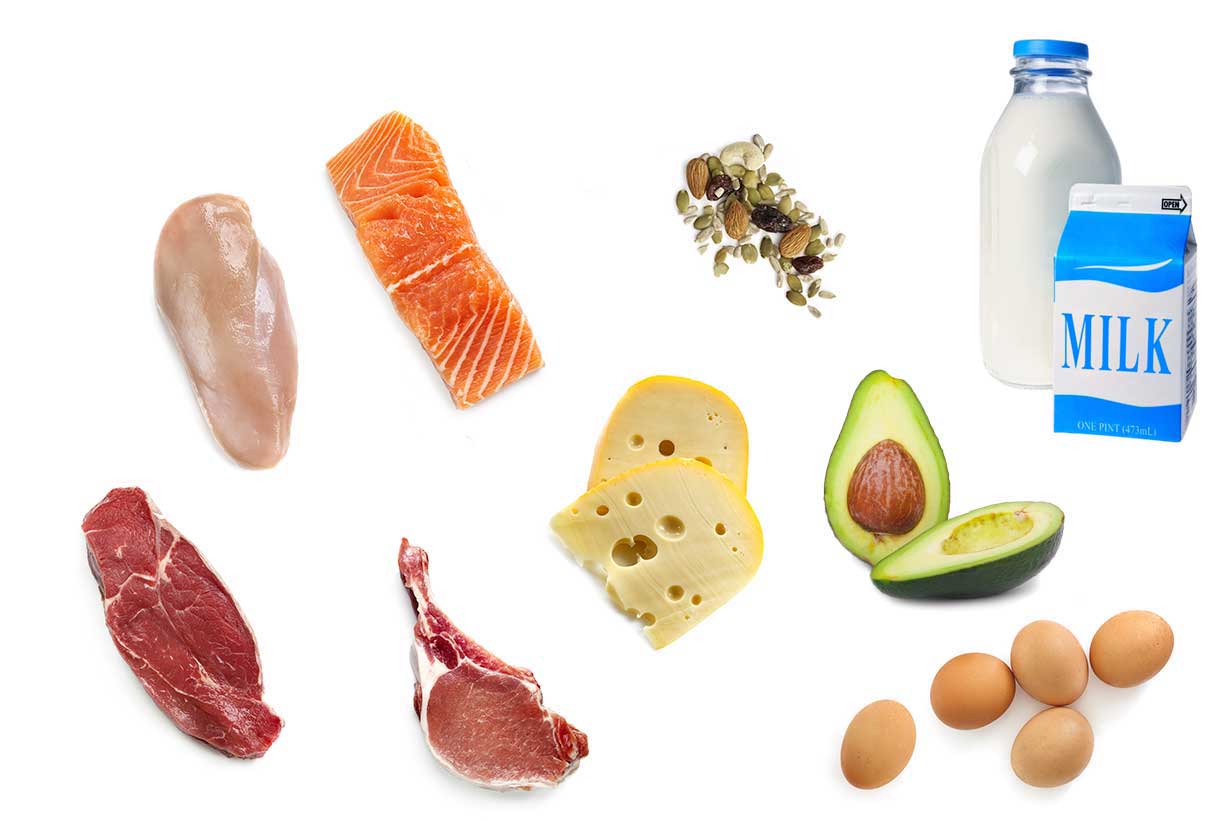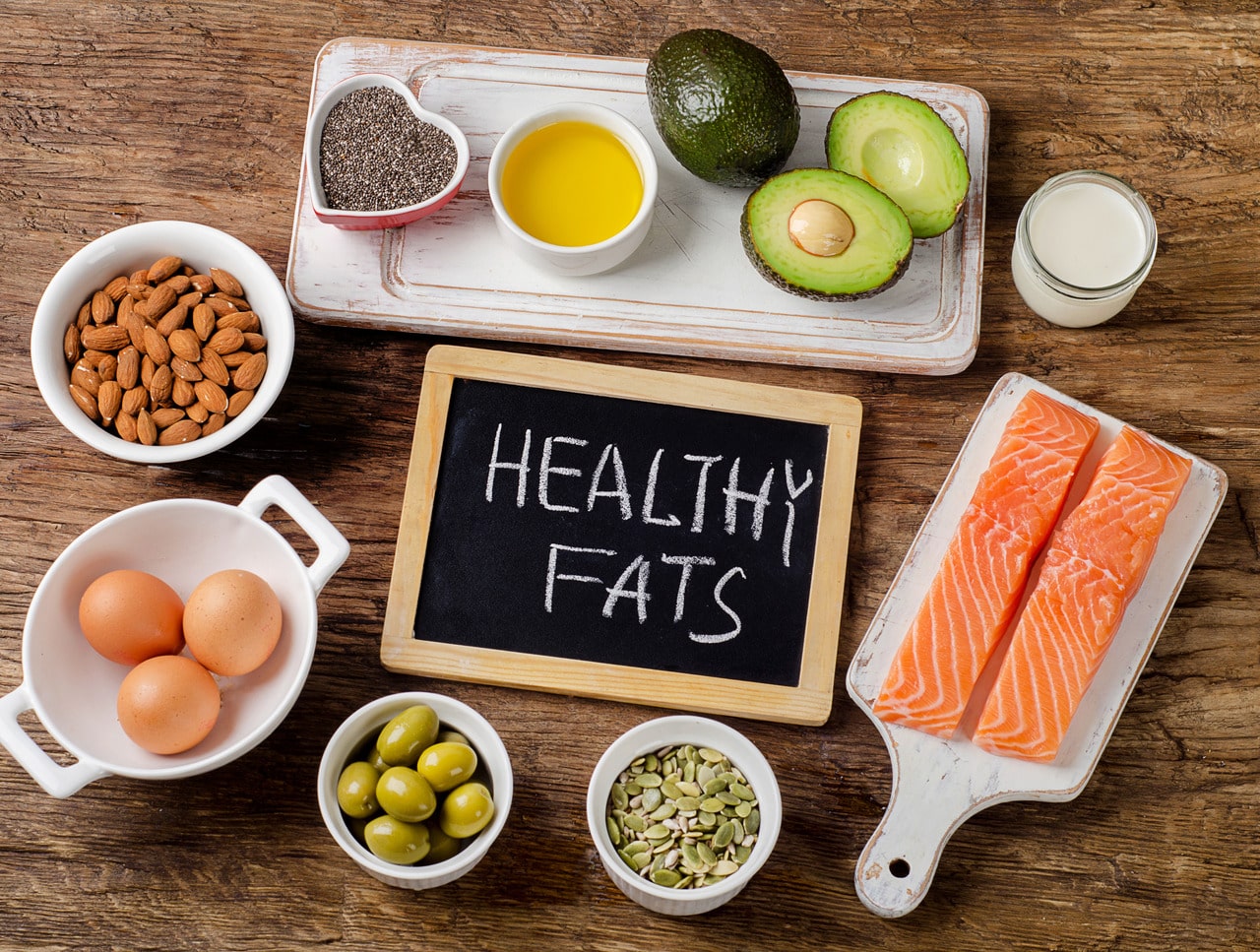
Too much fat in your diet, particularly saturated fats, can elevate your cholesterol levels, increasing the risk of heart disease.
The Importance of Fat in Your Diet
Contents
hide
A small amount of fat is crucial for a healthy, balanced diet. It provides essential fatty acids that the body cannot produce on its own. Fat also aids in the absorption of fat-soluble vitamins like A, D, and E. Any excess fat that isn’t used or converted into energy is stored as body fat, much like unused carbohydrates and proteins.
Types of Fat in Food
The main types of fat found in food are saturated and unsaturated fats. Most fats and oils contain both types in varying proportions.
Saturated Fats
Saturated fats are present in many foods, sweet and savory alike. They mainly come from animal sources like meat and dairy products, as well as certain plant foods such as palm and coconut oil.
Foods high in saturated fats include:
– Fatty cuts of meat
– Meat products like sausages and pies
– Butter, ghee, and lard
– Cheese, especially hard varieties like cheddar
– Cream, soured cream, and ice cream
– Some savory snacks like cheese crackers and certain popcorns
– Chocolate confectionery
– Biscuits, cakes, and pastries
– Palm oil
– Coconut oil and coconut cream
Cholesterol and Saturated Fats
Cholesterol is a fatty substance primarily produced by the liver. It’s carried in the blood as low-density lipoprotein (LDL) and high-density lipoprotein (HDL). Consuming too much saturated fat can increase “bad” LDL cholesterol levels, raising the risk of heart disease and stroke.
Guidelines for Saturated Fats and Trans Fats
Saturated Fat Guidelines:
The UK government recommends:
– Men should not consume more than 30g of saturated fat per day.
– Women should not consume more than 20g of saturated fat per day.
– Children should consume even less.
Trans Fats:
Trans fats are found naturally in some foods and can also be present in partially hydrogenated vegetable oils. They, too, can raise cholesterol levels. The UK government advises adults not to exceed about 5g of trans fats per day.
Unsaturated Fats
To reduce the risk of heart disease, it’s advised to decrease overall fat intake and replace saturated fats with unsaturated fats. This switch has been shown to lower cholesterol levels.
Monounsaturated Fats
These fats help maintain levels of “good” HDL cholesterol while reducing levels of “bad” LDL cholesterol. They are found in:
– Olive oil, rapeseed oil, and spreads made from these oils
– Avocados
– Some nuts like almonds, brazils, and peanuts
Polyunsaturated Fats
Polyunsaturated fats also lower “bad” LDL cholesterol levels. There are two main types: omega-3 and omega-6. Omega-3 fats are found in oily fish, while omega-6 fats are in vegetable oils and nuts.
Sources of Omega-3 Fatty Acids for Vegetarians:
– Flaxseed (linseed) oil
– Rapeseed oil
– Walnuts
– Omega-3 enriched eggs
Buying Lower Fat Foods
Nutrition labels on food packaging can help you reduce total fat and saturated fat intake. Look for terms like “high in sat fat” or “low in sat fat” to make informed choices.
Total Fat:
– High fat: more than 17.5g of fat per 100g
– Low fat: 3g of fat or less per 100g (1.5g per 100ml for liquids)
Saturated Fat:
– High in sat fat: more than 5g of saturates per 100g
– Low in sat fat: 1.5g of saturates or less per 100g (0.75g per 100ml for liquids)
“Lower Fat” Labels:
For a product to be labeled lower fat, it must contain at least 30% less fat than a similar product. However, lower fat foods may not always be lower in calories.
Cutting down on fat is just one part of a healthy diet. Make sure to balance your diet with other nutrients according to the Eatwell Guide.
Find healthier food choices using the Change4Life Food Scanner app when you’re shopping.
Foods High in Fats
Fat often gets a bad rap for being unhealthy, but it’s essential for your body to function properly. Healthy fats play crucial roles in maintaining skin health, supporting organ function, and regulating hormone production through the endocrine system. However, not all fats are created equal.
Understanding the Types of Fats
There are four main types of fats:
Monounsaturated fats
Polyunsaturated fats
Saturated fats
Trans fats
Each type of fat has a different structure. Saturated fats have a chemical composition that allows them to solidify more easily, while unsaturated fats remain liquid at room temperature. For instance, butter and bacon grease are examples of saturated fats, while olive oil and canola oil are examples of unsaturated fats.
Why Avoid Saturated and Trans Fats
Consuming large amounts of saturated or trans fats is generally considered detrimental to health.
Saturated Fats:
Saturated fats raise LDL cholesterol, also known as “bad” cholesterol. High levels of LDL cholesterol significantly increase the risk of heart disease by causing plaque buildup in arteries, which can lead to heart attacks and strokes.
Trans Fats:
Trans fats, or partially hydrogenated fats, not only raise LDL cholesterol but also lower HDL cholesterol, known as “good” cholesterol. To address this, the FDA has taken steps to eliminate artificial trans fats from processed foods.
In contrast, mono- and polyunsaturated fats help lower LDL cholesterol levels, making it advisable to limit saturated fats to less than 10% of daily calories and substitute them with unsaturated fats whenever possible.
Foods High in Saturated Fats to Avoid
If you’re aiming for a healthier diet, it’s crucial to steer clear of foods high in saturated fats. Here are some examples:
Fatty Meats
Poultry Skin
Heavy Cream
Butter
Soft Cheese
Bacon
Potato Chips
Pork Sausage Links
Vanilla Shake
Ice Cream
French Fries
Chicken Potpie
Deep-Dish Cheese Pizza
Caesar Salad
Low-Fat Alternatives
You can reduce saturated fat intake by opting for alternatives that are lower in saturated fats. Here are some suggestions:
Lean Beef
Low-Fat Cheese
Skin-Free Poultry
Skim Milk
Olive Oil
Turkey Bacon
Baked Potato Chips
Turkey Sausage
Creamy Yogurt Parfait
Reduced-Fat Ice Cream
Homemade Fries
DIY Chicken Potpie
Bagel Pizzas
Homemade Caesar Salad Dressing
By making smart choices and substituting high-saturated-fat foods with healthier options, you can improve your overall diet and support your heart health.
What Foods Are High in Fat? High-Fat Foods to Avoid
Understanding the nuances of dietary fats is essential for maintaining overall health. While fats are necessary for bodily functions, excessive consumption of unhealthy fats can lead to adverse health effects. Let’s delve into the different types of dietary fats and how to incorporate them wisely into your diet.
Types of Dietary Fats
1. Saturated Fats:
Saturated fats, often referred to as “solid fats,” are prevalent in animal products like cheese, cream, and butter, as well as certain plant-based oils such as coconut and palm oil. The American Heart Association (AHA) recommends limiting saturated fat intake to 5%-6% of total daily calorie intake to mitigate health risks associated with obesity and heart disease.
2. Trans Fats:
Trans fats, deemed the most detrimental to health, should be avoided as much as possible. Found in some processed foods, trans fats contribute to unhealthy weight gain, high cholesterol levels, and increased risk of various diseases, including heart disease and certain cancers.
3. Unsaturated Fats:
Unsaturated fats, primarily found in plant-based products, offer health benefits when consumed in moderation. They help elevate “good” HDL cholesterol levels while lowering “bad” LDL cholesterol levels, thus reducing the risk of heart problems and high blood pressure. Unsaturated fats are further categorized into monounsaturated and polyunsaturated fats.
– *Monounsaturated fats:* Found in nuts, olive oil, and avocados, these fats aid in lowering LDL cholesterol levels and increasing HDL cholesterol levels.
– *Polyunsaturated fats:* These fats, found in seafood and certain plant oils like safflower and sunflower oil, assist in reducing LDL cholesterol levels. Omega-3 fatty acids, a type of polyunsaturated fat, are deemed essential as the body cannot produce them independently.
Foods to Avoid and Consume in Moderation
Foods High in Bad Fats to Avoid:
Deep-fried foods, cakes, red meat, butter, palm oil, fast foods, and certain cheeses are rich in saturated and trans fats and should be limited in consumption.
Foods Rich in Healthy Fats to Consume in Moderation:
Fatty fish, olive oil, nuts, seeds, full-fat yogurt, avocados, dark chocolate, soft cheese, and eggs are sources of unsaturated fats and can be consumed in moderation as part of a balanced diet.
Reaping the Benefits of Fats Wisely
To harness the benefits of fats without compromising health:
– Restrict total fat intake to 20%-30% of daily calorie needs.
– Limit saturated fat intake to 6% of total daily calorie needs.
– Avoid trans fats altogether.
– Opt for unsaturated fats from plant-based sources.
– Prioritize vegetables, whole grains, and fruits in your diet.
– Choose healthier cooking oils and methods like grilling and roasting.
– Minimize consumption of red and processed meats.
– Be mindful of high-fat salad dressings.
By adopting these dietary practices, you can strike a balance between enjoying the benefits of fats and safeguarding your health against potential risks associated with excessive fat consumption.



